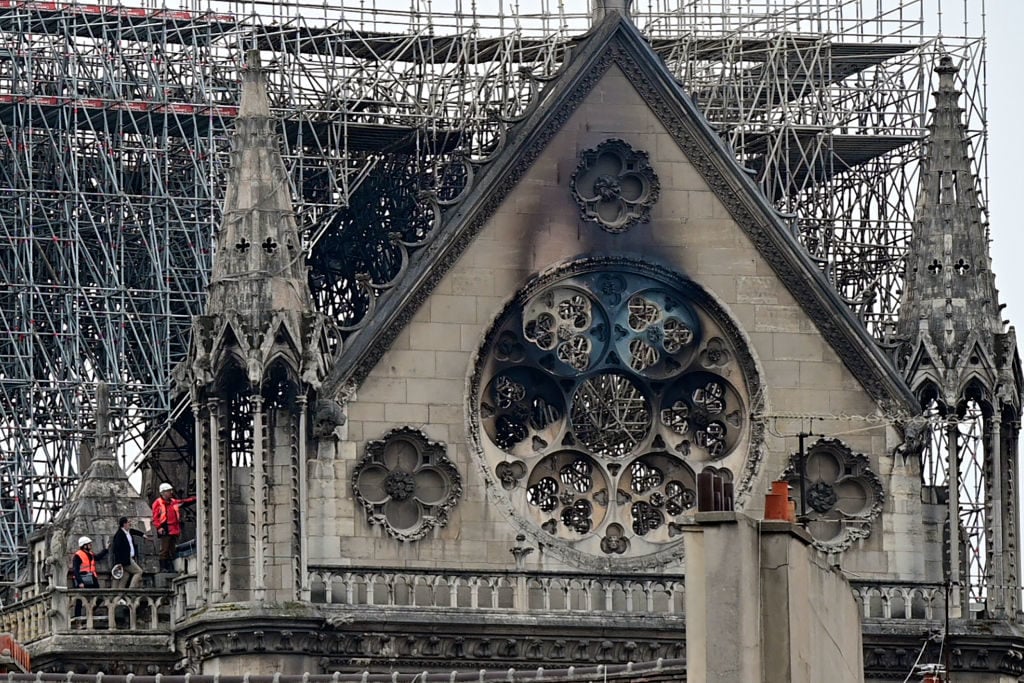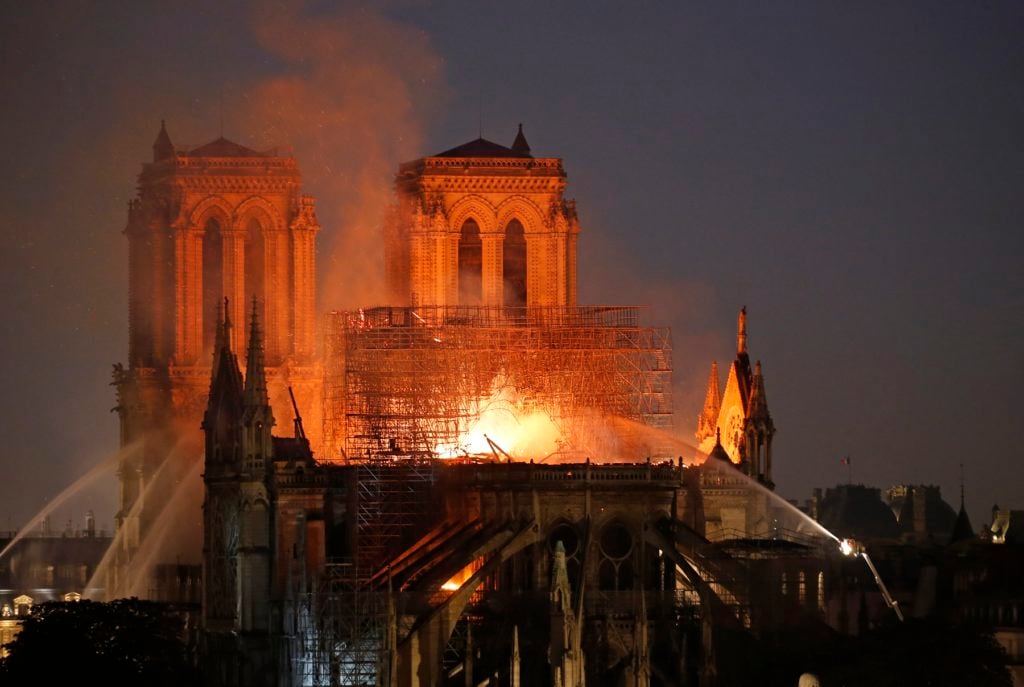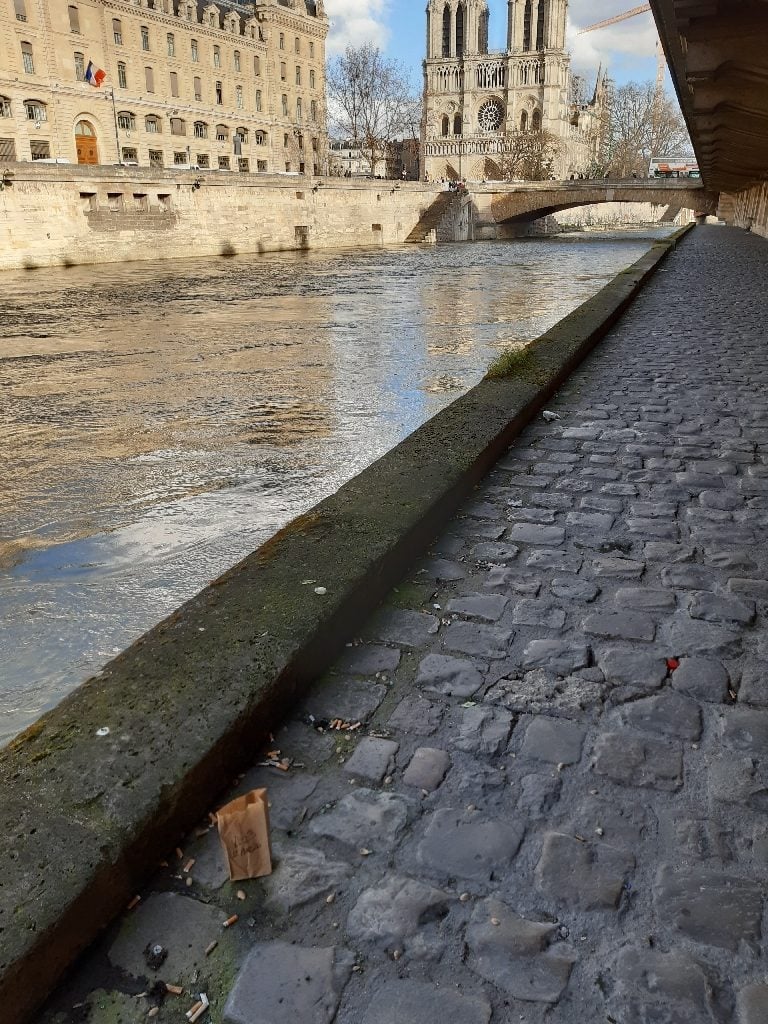Art World
Families Living Near Notre Dame Are Suing Paris For Allegedly Downplaying Lead Pollution That Resulted From the 2019 Blaze
Officials stand accused of endangering the public by not making clear the threat to local children.

Officials stand accused of endangering the public by not making clear the threat to local children.

Sarah Cascone

Families whose children lived in or attended school in the neighborhood surrounding the Notre Dame cathedral have teamed up with a trade union and anti-pollution activists to sue Paris for endangering their health after the devastating 2019 fire caused 400 tons of lead to pollute the surrounding area.
“Despite the scale of the fire and knowledge about the risk of pollution and contamination… no precaution in particular was taken by the authorities involved for more than three months,” the complaint reads, according to Agence France Presse.
The Paris city council “deliberately kept the directors of schools and nurseries located in the vicinity of the cathedral in the dark by refraining from communicating on the reality of lead pollution in this area,” continues the complaint, which was filed by two families and the CGT-Paris trade union, the Henri Pézerat. “These facts amount to the crime of endangering the lives of others.”
When the wooden lattice supporting the cathedral roof caught fire in April 2019, the flames melted the lead ceiling, causing it to collapse and releasing a cloud of toxic yellow smoke across the city. Lead is toxic to all humans, but is particularly dangerous for children, potentially causing neurological defects and problems with the kidneys and nervous system.

Flames and smoke are seen billowing from the roof at Notre Dame Cathedral on April 15, 2019 in Paris, France. Photo by Chesnot/Getty Images.
This isn’t the first time that France has faced a legal challenge over its handling of lead pollution at Notre Dame. In July 2019, the French environmental group Robin des Bois filed a lawsuit accusing Paris officials of endangering the public. The case was dismissed the following year, according to Radio France Internationale.
Five months after the fire, the New York Times reported that French authorities became aware of the dangers of lead pollution released by the disaster within 48 hours of the disaster, but opted to avoid making public statements on the issue to prevent fear in the surrounding community. As a result, students continued to attend nearby schools for a month before lead testing began. (The government finally encouraged children and pregnant women living in the area to get blood tests in June 2019, after one child was found to have elevated lead concentrations.)
Workers were also not initially given safety gear to protect them from lead particles. The pollution eventually forced work on the site to grind to a temporary halt in July 2019. The decontamination of lead in the neighborhood around the cathedral was not completed until four months after the blaze.

A paper bag containing a soil sample, with Notre Dame in the background. Photo by Lex van Geen.
There is some reason to believe that the exposure to lead toxins may have been even greater than the government has admitted. A simulation conducted by the National Institute for Industrial Environment in 2019 suggests the smoke may have spread lead up to 31 miles from the historic church.
In July 2020, Lex van Geen, a geochemist at Columbia University’s Lamont-Doherty Earth Observatory in New York, published a study in GeoHealth testing 100 soil samples taken around the cathedral. The results indicated that lead levels in areas downwind of the conflagration averaged nearly 430 mg/kg, double the amount in soil from areas unaffected by the smoke plume, and in excess of the nation’s 300 mg/kg limit.
The square around the cathedral was shut down yet again in May when tests revealed there were still elevated lead levels.